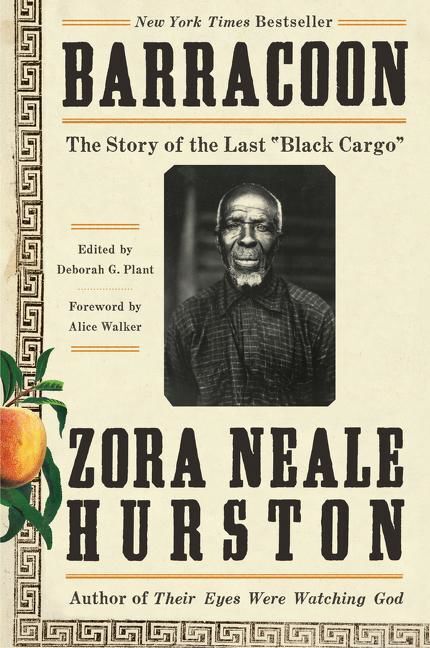
Written in 1931, unpublished until 2018, "Barracoon: The Story of the Last Black 'Cargo'" was based on Zora Neale Hurston's interviews with Oluale Kossola, who told her about his capture and enslavement.
Hidden in archives for nearly a century, the story of the last known survivor of Middle Passage — the forced voyage of enslaved Africans across the Atlantic Ocean to the New World — has finally been published for the world to read in Zora Neale Hurston’s posthumous work “Barracoon: The Story of the Last ‘Black Cargo.”
In 1927, during the Harlem Renaissance, Hurston, a respected anthropologist and author, journeyed from New York to Alabama to document the spoken words of Oluale Kossola, later given the name Cudjo Lewis. Kossola arrived in the United States on The Clotilda, the final slave ship to traverse the Atlantic Ocean from West Africa to the American South.
Born circa 1841, Kossola lived peacefully with his people, the Takkoi nation, in what is today the Republic of Benin, until he was captured and sold into slavery around the age of 18. Not only did Kossola survive the traumatic conditions of Middle Passage but also years of slavery, the Civil War, the Reconstruction Era, and the enforced racial segregation of Jim Crow.
Given that Kossola had lived through such difficult times, Hurston set out to record his account. With funding provided by a woman named Charlotte Mason, a patron of African-American artists, Hurston made several trips to Alabama to spend time with Kossola and listen to him share what he had endured during in his life. Because of Mason’s generosity of Mason, Hurston’s efforts, and the safeguarding of numerous other custodians of Black folklore, the story, in Kossola’s own words, is printed at last.
Although he was 85 years old when Hurston began interviewing him, Kossola was able to describe, in vivid detail, his memories of his community and culture in West Africa during his youth. Kossola recollected his experiences thereafter — the scenes of his village being invaded, the forced trek on foot to the coast, and the building fear inside the barracoons — the slave sheds — as he and others awaited their fate.
The year was 1859.
Meanwhile, across the ocean, on the docks of the Alabama River, legend has it that a bet was placed. Although the foreign importation of slaves into the U.S. had been banned in 1808, slavery itself was still legal. Three brothers by the name of Meaher along with Captain William Foster wagered with one another about voyaging to Africa, securing a cargo of slaves, and sailing back to U.S. waters undetected. No one can know for certain how the trip originated, only that it was ultimately undertaken.
Hurston wrote, “The Clotilda slipped away from Mobile as secretly as possible so as not to arouse the curiosity of the government.”
Over a period of months, Foster successfully secured and transported the “contraband cargo.” Almost immediately after completing the illegal voyage, the slaver’s concealed their crimes by sinking The Clotilda in the Alabama River, attempting to destroy the evidence and hide the identities of all persons involved.
Yet, the truth of the ordeal has been uncovered over time — and from the unlikely, first-person point of view of one of its captives.
With an ethnographic approach, Hurston transcribed Kossola’s voice, vernacular diction, and even the noticeable accent of his non-native English, spelling words as she heard them pronounced.
The project was completed in 1931 after four years of work. Hurston submitted the manuscript to publishers. However, publishers responded requesting that the account be rewritten “in a language rather than dialect.” Believing that the value of the work was the preservation of Kossola’s colloquial orature, Hurston refused to revise the manuscript.
Hurston went on to write numerous poems, short stories, novels, and plays including her notable book, “Their Eyes Were Watching God.” She passed away in 196, leaving many unpublished works behind.
Her alma mater, Howard University, held the manuscript in safekeeping for years with the help of librarian Joellen ElBashir at the Moorland-Spingard Research Center.
In 2018, Deborah G. Plant, a scholar of African American literature and Africana studies, served as editor for the book, which was published by Amistad Press. Plant’s research focuses on Hurston’s literary works and legacy, making her a dedicated custodian of the account. In the editor’s introduction Plant praised the veracity of the work writing that “Hurston’s methods respect Kossola’s own storytelling sensibility; it is one that is ‘rooted’ in African soil.”
Many have grasped the baton in the relay over time to make known, in Hurston’s words: “The only [last] man on earth who has in his heart the memory of his African home; the horrors of a slave raid; the barracoon.”
There were 177 years between the time that Kossola was born and his story was published. Hurston’s “Barracoon” is an important book for anyone digging for the seeds of racial injustice in our world.
“Barracoon: The Story of the Last ‘Black Cargo.’” Zora Neale Hurston, edited by Deborah G. Plant. Amistad, $24.99 (208p) ISBN 978-0-06-274820-1, can be ordered through Napa Bookmine or Copperfield’s Books.
WATCH NOW: 5 AFRICAN AMERICANS TO LEARN ABOUT DURING BLACK HISTORY MONTH
CHECK OUT: PHOTOS OF THE MONTH: A LOOK AT NAPA VALLEY NEWS IN PICTURES

Matthew Eggers and instructor Stan Hitchcock work on a project at Napa Valley College's machine tool technology program. It's one of the few college programs that are meeting in person during the COVID-19 pandemic.
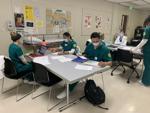
Small groups of students meet for nursing classes at NVC during the COVID-19 pandemic.
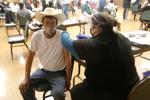
Alejo Calderon, a 76-year-old vineyard worker from Napa, was one of some 400 people to receive doses of the Pfizer coronavirus vaccine Wednesday at St. John the Baptist Parish Hall during the start of OLE Health's two-day inoculation clinic. About 1,200 people, including local farmworkers and current OLE Health patients, are scheduled to receive the vaccine through Thursday.

Patients visiting OLE Health's coronavirus vaccination clinic at St. John the Baptist Parish Hall in Napa received shots at one of seven stations, then were asked to wait 15 minutes at the hall before leaving.

Patricia Rardin celebrating her 100th birthday with escargot and champagne courtesy of Bouchon.
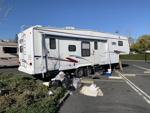
A RV camper near BevMo! in north Napa. Residents say they have nowhere else to go.

A toy seen near an RV camp in north Napa.

Trina Wagner says giving a fire victim a quilt is like "giving them a big hug and saying how sorry we are."
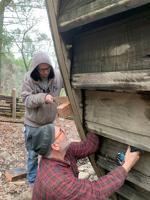
Rob Grassi, right, is the millwright at Bale Grist Mill State Historic Park in St. Helena. He was recently awarded the 2020 Preservationist of the Year Award of Merit for his work restoring the Bale Grist Mill wheel. Jacob Cull assisted.
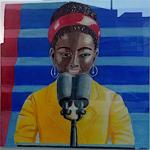
A portrait of poet Amanda Gorman, along with her poem ‘The Hill We Climb,’ read at President Biden’s inauguration, is on display downtown Calistoga, as part of the Walking Tour of Poetry.

Students, teachers and staff created about 400 Valentines which will be distributed to Cedars Care Home, Rancho De Calistoga, Calistoga Springs, and Chateau Calistoga.
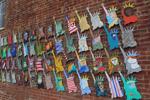
"Taking Liberties," featuring more than 100 personal interpretations of liberty, is on display at the corner of Main and Spring streets.

With restaurants currently unable to provide indoor dining, a flood of picnickers spread out on Oxbow Commons on a recent weekend. Napa County is hoping COVID-19 cases fall to a level that will allow some restrictions on businesses to be lifted.

Photographer Brent Kesterson of Lasting Memories takes a photo of a Bel Aire Park elementary school student. Pictures were taken outside and with appropriate social distancing.

Napa High junior Andre Fannin, right, and freshman Finn McGrath, left, and Vintage's Aidan Rutherford finished 7-8-9 in Wednesday's Big Game meet at Kennedy Park.

Justin-Siena’s Jacob Guiducci, foreground, gets a good start en route to winning Wednesday’s meet at American Canyon High.

Vintage's Erin Meader returns a deep shot by Napa High's Sophia Kroll in the No. 2 singles match at the Napa Valley Tennis Association courts on Tuesday.

Napa High's No. 1 doubles player Ava Moreci returns a shot against Vintage at the Napa Valley Tennis Association courts on Tuesday.

Retired art teacher Linda Rowland led a heart-themed art project at St. Helena Elementary School.

Mary Novak's tree at the corner of Hudson and Madrona is festooned with Valentine's Day decorations.

The oldest of six children, Maria "Trini" Maldonado spent plenty of time in the kitchen while growing up in Cuquío in the Mexican state of Jalisco. As a little girl, she sold "botanas" (snacks) like diced fruit with "chile de polvo" and lime. Today her recipes form the foundation of Trini's Catering, founded by her son Cristian.

Entrepreneur Brion Wise, who grew up on an fruit farm in Washington, grew cotton in Australia, developed a titanium bicycle chain, and operated a restaurant and bar in Colorado before moving to wine country.
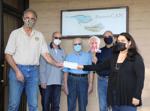
ParentsCAN received a the generous donation from North Napa Rotary's Harvest Auction to help them support the families of children with special needs. The auction included items from local businesses and club members. Featured from left are ParentsCAN President Steve Simich, Bill Bennett, John Duser, fundraising chairperson Nelson Brooks (on photograph), Tom Webber and ParentsCAN executive director Marlena Garcia.

American Canyon senior Ezekiel Anderson, seated, poses with, from left, dad Ian, brothers Isaac and Kaleb, and mom Daniela after signing with Benedictine College on Jan. 31.

Carol Hall is hosting the Girl Scout Cookie Cupboard in her Napa garage during COVID-19.
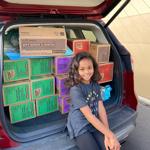
Talia, a Napa Girl Scout, with her cookie haul. Due the the COVID-19 pandemic, cookies are only being sold online. They can be delivered in-person or mailed. There will be no public booth sales this year.

Kindergarten students in Christina Lawrence's classroom at Browns Valley school wear masks and work at desks with plastic barriers. Each has their own container of supplies. Due to the COVID-19 pandemic, most NVUSD students are only in the classroom twice a week and learning remotely the rest of the week.

Napan Peter Edridge built a 18-foot wingspan radio controlled airplane as a pandemic project. It can fly as fast as 100 mph.

Rhonda Chadwick, of House of Broken Dolly, said these pants were the only thing she had left after the 2020 fires destroyed her Berryessa home.

Emily Smith wraps candies at Napa chocolatier La Foret Chocolate & Confections. Did you know Sunday is Valentine's Day?

Emily Smith and Wendy Sherwood of La Foret Chocolate & Confections busily prepare for Valentine's Day.

The inside of the old Press Wireless building in the Napa-Sonoma Wildlife Area. Once, equipment filled this room as workers took in radio transmissions of the news and tracked Sputnik satellites.

Napa’s new card room, Ace & Vine, opened for business this past week. Card games are temporarily being played in this outdoor tent.
Catch up on Napa County's top news stories
When Bobby Solis opened Pancha's in 1982, the bar was one of many. It outlived its competition, survived fires, floods and earthquakes. Now it…
BottleRock's producer will extend nearly $200,000 in early payment to the Expo as COVID-19 continues to shut down large spectator gatherings.
When a young child ran toward Highway 29 traffic, an American Canyon city employee was the right person at the right place to prevent a tragedy.
The St. Helena-based wine producer confirmed it is "on a path" to becoming a public company. It will debut under the stock ticker NAPA.
A mountain lion was spotted in a central Napa neighborhood earlier this month. There are witnesses and a video to prove it.
A community of homeless Napans are living in RVs and other vehicles in a parking lot in North Napa. What's going on?
As a federally qualified health center operating in Napa and Solano counties, OLE will vaccinate eligible patients it says may have otherwise …
Various possibilities for closing a middle school will be pondered in March and beyond, according to the head of the Napa school district.
The former Health and Human Services Agency campus on Old Sonoma Road has sat empty since 2016. Previous efforts to sell the 8.6 acres have no…
Napa County failed to secure a $10 million grant for a Yountville-to-St. Helena Vine Trail segment in round one, with round two to come.
"story" - Google News
March 04, 2021 at 05:03AM
https://ift.tt/3e8ITKi
Books: 'Barracoon,' a survivor's story of capture and enslavement is finally published - Napa Valley Register
"story" - Google News
https://ift.tt/2YrOfIK
https://ift.tt/2xwebYA
Bagikan Berita Ini














0 Response to "Books: 'Barracoon,' a survivor's story of capture and enslavement is finally published - Napa Valley Register"
Post a Comment